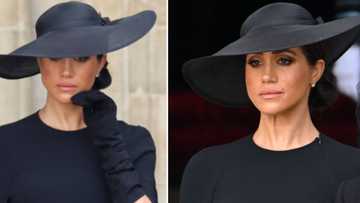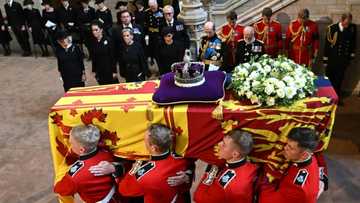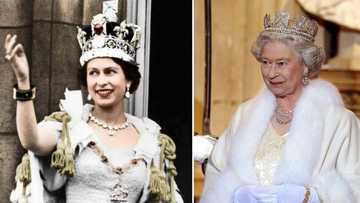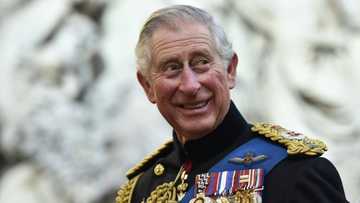Full List of British Monarchs Before Queen Elizabeth II
- Before the reign of Queen Elizabeth II, the United Kingdom witnessed the reign of several monarchs
- However, Queen Elizabeth II seems to be the most popular of them all and also the longest-serving ruler of the United Kingdom
- Before her, the United Kingdom had been ruled by eleven monarchs with two queens before Queen Elizabeth II
PAY ATTENTION: Сheck out news that is picked exactly for YOU ➡️ find the “Recommended for you” block on the home page and enjoy!
The news of the death of Queen Elizabeth II, the longest-serving monarch since the beginning of modern history shook the whole world into mourning.
The glorious monarch ruled over the United Kingdom for over 70 years witnessing the appointment of 15 UK prime ministers, 12 United States presidents, and all the military and civilian presidents of Nigeria.

Source: UGC
Her death was announced by Buckingham Palace on Thursday, September 8, 2022.
Buckingham Palace said in a statement:
PAY ATTENTION: Never miss breaking news – join Briefly News' Telegram channel!
“The Queen died peacefully at Balmoral this afternoon. The King and The Queen Consort will remain at Balmoral this evening and will return to London tomorrow.”
However, before the ascension of Queen Elizabeth II, we take a look back at the monarchs before her reign.
Here is the full list……
QUEEN ANNE 1702 – 1714
At 37 years of age, Anne, daughter of James II ascended the throne as the first British monarch. According to Britannica, she was born on February 6, 1665, in London.
It was gathered that she became queen in March 1702, where she ruled until 1714 after her demise.
KING GEORGE I 1714 -1727
Son of Sophia and the Elector of Hanover, great-grandson of James I. The 54-year-old George arrived in England able to speak only a few words of English with his 18 cooks and 2 mistresses in tow.
George never learned English, so the conduct of national policy was left to the government of the time with Sir Robert Walpole becoming Britain’s first Prime Minister.
George spent little time in England – he preferred his beloved Hanover, although he was implicated in the South Sea Bubble financial scandal of 1720.
KING GEORGE II 1727 – 1760
Only son of George I. He was more English than his father but still relied on Sir Robert Walpole to run the country.
George was the last English king to lead his army into battle at Dettingen in 1743.
In 1745 the Jacobites tried once again to restore a Stuart to the throne. Prince Charles Edward Stuart, ‘Bonnie Prince Charlie’. landed in Scotland.
He was routed at Culloden Moor by the army under the Duke of Cumberland, known as ‘Butcher’ Cumberland. Bonnie Prince Charlie escaped to France with the help of Flora MacDonald, and finally died a drunkard’s death in Rome.
KING GEORGE III 1760 – 1820
He was the grandson of George II and the first English-born and English-speaking monarch since Queen Anne.
His reign was one of elegance and the age of some of the greatest names in English literature – Jane Austen, Byron, Shelley, Keats, and Wordsworth.
It was also the time of great statesmen like Pitt and Fox and great military men like Wellington and Nelson.
In 1773 the ‘Boston Tea Party was the first sign of the troubles that were to come in America. The American Colonies proclaimed their independence on July 4th 1776.
George was well-meaning but suffered from a mental illness due to intermittent porphyria and eventually became blind and insane. His son ruled as Prince Regent after 1811 until George’s death.
KING GEORGE IV 1820 – 1830
Known as the ‘First Gentleman of Europe’. He had a love of art and architecture but his private life was a mess, to put it mildly! He married twice, once in 1785 to Mrs. Fitzherbert, secretly as she was a Catholic, and then in 1795 to Caroline of Brunswick. Mrs. Fitzherbert remained the love of his life. Caroline and George had one daughter, Charlotte in 1796 but she died in 1817. George was considered a great wit but was also a buffoon and his death was hailed with relief.
KING WILLIAM IV 1830 – 1837
Known as the ‘Sailor King’ (for 10 years the young Prince William, brother of George IV, served in the Royal Navy), he was the third son of George III. Before his accession, he lived with Mrs. Jordan, an actress, by whom he had ten children. When Princess Charlotte died, he had to marry in order to secure succession.
He married Adelaide of Saxe-Coburg in 1818. He had two daughters but they did not live. He hated pomp and wanted to dispense with the Coronation. The people loved him because of his lack of pretension.
During his reign, Britain abolished slavery in the colonies in 1833. The Reform Act was passed in 1832, this extended the franchise to the middle classes on a basis of property qualifications.
QUEEN VICTORIA 1837 – 1901
Victoria was the only child of Princess Victoria of Saxe-Coburg and Edward Duke of Kent, the fourth son of George III.
The throne Victoria inherited was weak and unpopular. Her Hanoverian uncles had been treated with irreverence.
In 1840 she married her cousin Albert of Saxe-Coburg. Albert exerted tremendous influence over the Queen and until his death was the virtual ruler of the country.
The Queen withdrew from public life after the death of Albert in 1861 until her Golden Jubilee in 1887. Her reign saw the British Empire double in size and in 1876 the Queen became Empress of India, the ‘Jewel in the Crown’. When Victoria died in 1901, the British Empire and British world power had reached their highest point.
She had nine children, 40 grandchildren, and 37 great-grandchildren, scattered all over Europe.
KING EDWARD VII 1901 – 1910
A much-loved king, the opposite of his dour father. He loved horse racing, g*mbling, and women! This Edwardian Age was one of elegance. Edward had all the social graces and many sporting interests, yachting and horse racing – his horse Minoru won the Derby in 1909. Edward married the beautiful Alexandra of Denmark in 1863 and they had six children.

Read also
Queen Elizabeth II's fortune: Longest-serving monarch was among world's biggest land owners
The eldest, Edward Duke of Clarence, died in 1892 just before he was to marry Princess Mary of Teck. When Edward died in 1910 it is said that Queen Alexandra brought his current mistress Mrs. Keppel to his bedside to take her farewell. His best-known mistress was Lillie Langtry, the ‘Jersey Lily’.
KING GEORGE V 1910 – 1936
George had not expected to be king, but when his elder brother died he became the heir-apparent. He had joined the Navy as a cadet in 1877 and loved the sea. He was a bluff, hearty man with a ‘quarter-deck’ manner.
In 1893 he married Princess Mary of Teck, his dead brother’s fiancee. His years on the throne were difficult; the First World War in 1914 – 1918 and the troubles in Ireland which lead to the creation of the Irish Free State were considerable problems. In 1932 he began the royal broadcasts on Christmas Day and in 1935 he celebrated his Silver Jubilee.

Read also
Queen Elizabeth II: 4 Cool facts about King Charles III, the oldest person to now assume the British throne
His later years were overshadowed by his concern about the Prince of Wales and his infatuation with Mrs. Simpson.
KING EDWARD VIII June 1936 – December 1936
Edward was the most popular Prince of Wales Britain has ever had. Consequently when he renounced the throne to marry Mrs. Wallis Simpson the country found it almost impossible to believe. The people as a whole knew nothing about Mrs. Simpson until early in December 1936.
Mrs. Simpson was an American, a divorcee and had two husbands still living. This was unacceptable to the Church, as Edward had stated that he wanted her to be crowned with him at the Coronation which was to take place the following May. Edward abdicated in favour of his brother and took the title, "Duke of Windsor". He went to live abroad.
KING GEORGE VI 1936 – 1952
George was a shy and nervous man with a very bad stutter, the exact opposite of his brother the Duke of Windsor, but he had inherited the steady virtues of his father George V. He was very popular and well loved by the British people. The prestige of the throne was low when he became king, but his wife Elizabeth and his mother Queen Mary were outstanding in their support of him.
The Second World War started in 1939 and throughout the King and Queen set an example of courage and fortitude. They remained at Buckingham Palace for the duration of the war in spite of the bombing. The Palace was bombed more than once. The two Princesses, Elizabeth and Margaret, spent the war years at Windsor Castle.
QUEEN ELIZABETH II 1952 – 2022
Elizabeth Alexandra Mary, or ‘Lilibet’ to close family, was born in London on 21 April 1926. Like her parents, Elizabeth was heavily involved in the war effort during the Second World War, serving in the women’s branch of the British Army known as the Auxiliary Territorial Service, training as a driver and mechanic.
She married her cousin Prince Philip, Duke of Edinburgh, and they had four children: Charles, Anne, Andrew, and Edward. When her father George VI died, Elizabeth became Queen of seven Commonwealth countries: the United Kingdom, Canada, Australia, New Zealand, South Africa, Pakistan, and Ceylon (now known as Sri Lanka).
Elizabeth’s coronation in 1953 was the first to be televised, serving to increase popularity in the medium and doubling television license numbers in the UK. The huge popularity of the royal wedding in 2011 between the Queen’s grandson, Prince William, and the commoner Kate Middleton, now the Duke and Duchess of Cambridge, reflected the high profile of the British Monarchy at home and abroad.
On 9th September 2015, Elizabeth became Britain’s longest-serving monarch, ruling longer than her great-great-grandmother Queen Victoria who reigned for 63 years and 216 days.
Her Majesty Queen Elizabeth II died at Balmoral on 8th September 2022 at the age of 96. She was the longest reigning monarch in the history of the United Kingdom, celebrating her Platinum Jubilee in June 2022.
King Charles III: History shows British monarchs named Charles had a bad time
Briefly News previously reported that After his mother, Queen Elizabeth II, died, the Prince of Wales was proclaimed the next British monarch, and he chose King Charles III.

Read also
Hours before Queen's death, double rainbow appears at Buckingham Palace, many get emotional
While this looks like a harmless decision, historians are concerned about the choice of the name Charles because the legacies of Kings Charles I and Charles II have been problematic.
King Charles III, full Charles Arthur George, according to the BBC, could have settled on any of his names as King. Many had even speculated that he would choose George once he became King.
PAY ATTENTION: Сheck out news that is picked exactly for YOU ➡️ find the “Recommended for you” block on the home page and enjoy!
Source: Legit.ng

Kelly Lippke (Senior Editor) Kelly Lippke is a copy editor/proofreader who started her career at the Northern-Natal Courier with a BA in Communication Science/Psychology (Unisa, 2007). Kelly has worked for several Caxton publications, including the Highway Mail and Northglen News. Kelly’s unique editing perspective stems from an additional major in Linguistics. Kelly joined Briefly News in 2018 and she has 14 years of experience. Kelly has also passed a set of trainings by Google News Initiative. You can reach her at kelly.lippke@briefly.co.za.

Lebogang Mashego (Current Affairs HOD) Lebogang Mashego runs the Current Affairs desk. She joined the Briefly News team in 2021. She has 6 years of experience in the journalism field. Her journalism career started while studying at Rhodes University, where she worked for the Oppidan Press for 3 years. She worked as a lifestyle writer and editor at W24 and Opera News. She graduated with a BA degree majoring in Journalism and Media Studies in 2017. She's a recipient of the INMA Elevate Scholarship. Email: lebogang.mashego@briefly.co.za







